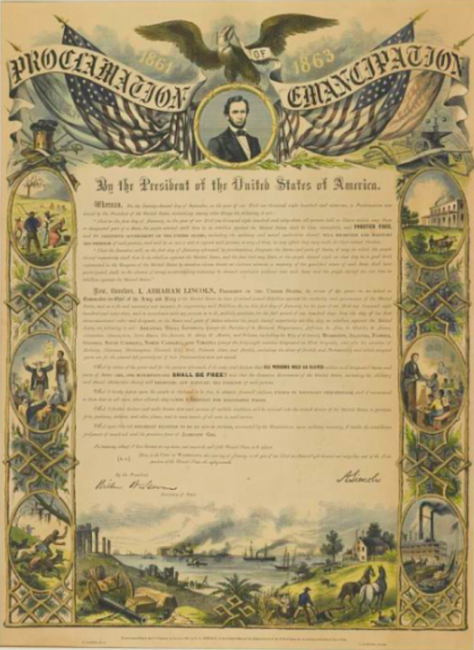Juneteenth: Commemoration and Celebration
Saturday, June 19, 2021 marks the longest-celebrated and often overlooked commemoration of the ending of chattel slavery in the United States. President Abraham Lincoln’s Emancipation Proclamation, word of this military edict and the righteous end to the American Civil War finally reached Galveston, Texas, declaring that all enslaved people were now free — nearly two and a half years after the fact.
In celebration of Juneteenth, we are sharing some ways in which Foster faculty and staff have been learning, reflecting upon and discussing the historical legacy of systemic bias, inequity, and racism in the U.S. At the beginning of the month, we invited the Foster community to learn, share resources, and reflect upon the hundredth anniversary of the Tulsa Race Massacre. Below are some of the resources that our faculty and staff explored, along with their reactions and responses.

Publishers throughout the North responded to a demand for copies of Lincoln’s proclamation and produced numerous decorative versions, including this engraving by R. A. Dimmick in 1864. National Museum of American History, gift of Ralph E. Becker
LEARNING THE HISTORY…and how the stories are told
Many Foster faculty and staff members described their shock and surprise about the lack of discussion about this event:
“I learned that I have so much to learn… Perhaps the most shocking part of the Tulsa Race Massacre materials I watched/listened to was the attempted cover up of facts through the destruction of newspaper articles and microfilm, detailed in the Sidedoor podcast. That effort further cements that those who participated knew what they did would not be viewed favorably in the future and therefore attempted to conceal the truth from history. It is concrete evidence of the continual white washing of American history.”
“Embarrassed that I didn’t know more about this. Angry at the individuals who participated as well as those who covered up the truth. Deeply saddened at the impact this has had on generations. Wondering why we haven’t made more progress in addressing racism and inequity.”
WHAT CAN THE FOSTER SCHOOL DO?
Several Foster faculty watched a webinar about the multimedia case developed by HBS professor Mihir Desai. Suresh Kotha (MGMT faculty) stated, “Professor Desai taking on the complex subject of reparations for past injustice in a finance class was inspiring. I teach about how advanced and potentially disruptive technologies such as AI. These technologies are fundamentally reshaping the business landscape. In many ways, they can create greater inequality in our society. I am inspired to make our students address social justice when thinking about adopting such technologies and not just focus on ROI.”
Bruce Avolio, MGMT faculty and Director of the Center for Leadership and Strategic Thinking had this to say after watching the webinar: “There are many events that have happened in the past that we were never taught, and certainly not discussed. This includes in many of our organizations throughout the US and as an instructor, knowing more about these cases, would help me and I suspect others to be more aware of and sensitive to how the past guides what we see today, and explains in part, some of the frustrations in the most recent cases of social injustice.”
Aaron Robertson, Academic Advisor urges us to “Keep funding the great work of the CBDC. They most closely represent the legacy of Greenwood.”
MOVING FORWARD
Jack Chung, Associate Director, Foster Career Services shares wise words for moving forward: “I learned that with hard work and support of each other, a thriving community can be built. But I also learned that hate and rage can tear down such communities so quickly.”
CELEBRATIONS
Celebrate Juneteenth in community, in fellowship, and by acknowledging the significant ways Blacks have contributed and continue to contribute to this country. There are many local and national community groups that have robust Juneteenth activities and resources for learning available to anyone with a desire to learn about the history of the holiday and what it means in today’s culture.
- June 13-21 | Northwest African American Museum (NAAM) has many programs to participate in virtually. https://www.naamnw.org/events/juneteenth
- Flag raising on UW Seattle and UW Tacoma campuses
- List of activities across the country – https://juneteenth.com/
- MOHAI | 1619: Resistance – Resilience – Remembrance
